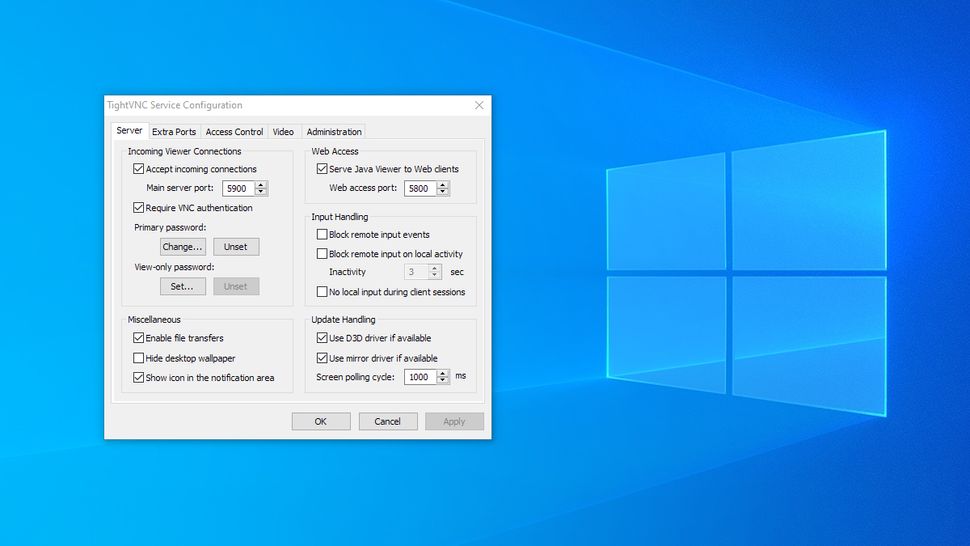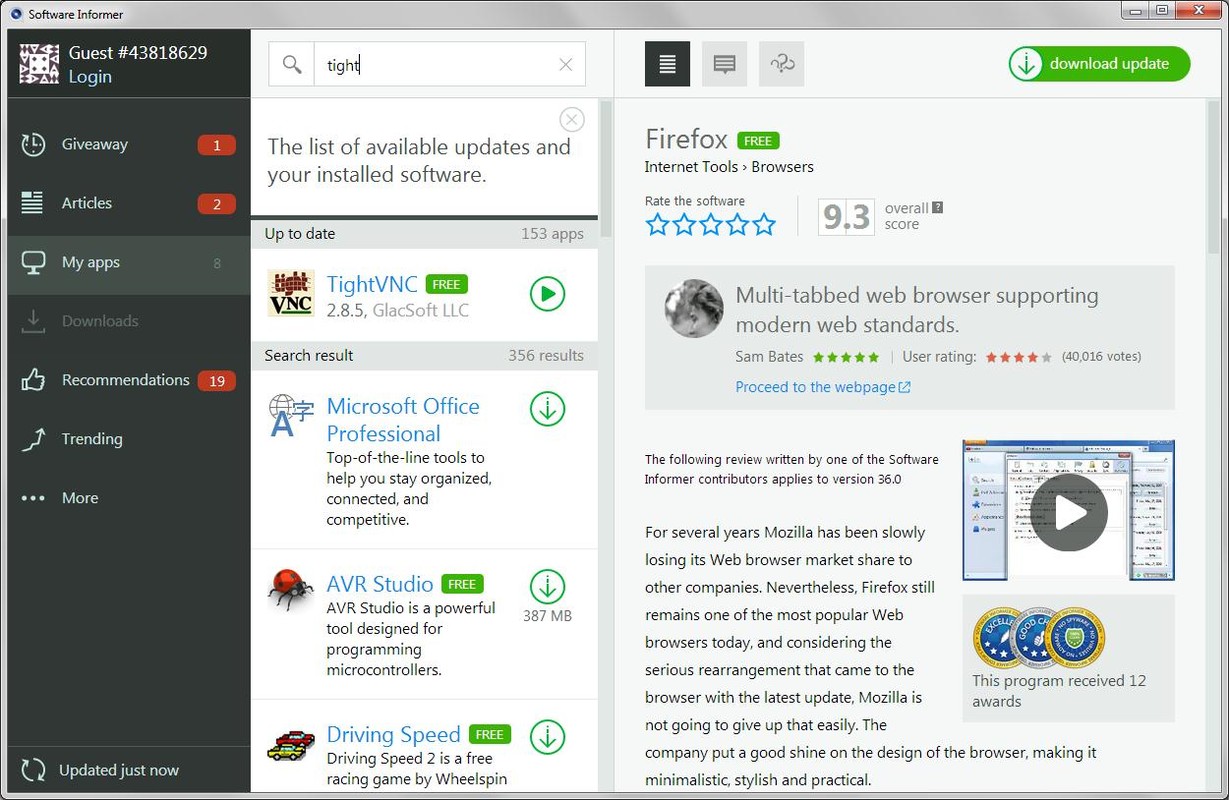

A discussion of X11 is out of scope for this post, but more info can be found here.įor TightVNC Server to start automatically when we boot up our RaspPi, we need to create an init script and add it to the default runlevels. This is actually used by the X Window System, aka ‘X11’. You may have noticed TightVNC was also running on port 6001. Stop TightVNC by entering the ‘ vncserver -kill :1‘ command. Note the entry for TightVNC on port 5901. You should see output similar to the screen grab below. To verify TightVNC is running on 5901, enter the command ‘ sudo netstat -tulpn‘. This indicates that TightVNC is running.īy default, TightVNC runs on a port 5901. After inputting a password, you should see output similar to the below screen grab. The password can be different than the system password used by this user.

The first time you run this command, you will be asked to set a VNC password for the current user (‘pi’). To test the success of the TightVNC Server installation, enter ‘ vncserver‘ in the command shell. Sudo apt-get update & sudo apt-get upgrade The first command is are optional, but usually recommended before installing new software. To install the TightVNC Server software, run the following commands from the RaspPi. I successfully performed this process on a RaspPi Model B, with copies of both Raspbian “wheezy” and Soft-float Debian “wheezy”. I used PuTTY from my Windows 8 laptop to perform the following installation and configuration. The client software, the TightVNC Java Viewer, is installed on a client laptop or desktop computer. TightVNC has two parts, the client and the server. The TightVNC Server software is installed on the Raspberry Pi (RaspPi). GlavSoft’s TightVNC and Microsoft’s RDC are almost identical in terms of functionality. If you are a Windows user, you are no doubt familiar with Microsoft’s Remote Desktop Connection (RDC). It transmits the keyboard and mouse events from one computer to another, relaying the graphical screen updates back in the other direction, over a network.‘

What is VNC? According to Wikipedia, ‘ Virtual Network Computing (VNC) is a graphical desktop sharing system that uses the RFB protocol (remote framebuffer) to remotely control another computer. With TightVNC, you can see the desktop of a remote machine and control it with your local mouse and keyboard, just like you would do it sitting in the front of that computer.‘ BackgroundĪccording to TightVNC Software’s website, ‘ TightVNC is a free remote control software package. WinSCP is an excellent SFTP client, but again, no substitute for a fully-functional GUI. The answer to this predicament? TightVNC, by GlavSoft LLC. But what’s the alternative if you want to interact directly with your Raspberry Pi’s GUI? PuTTY is an excellent SSH client, but the command shell is no substitute. Sometimes connecting a keyboard, mouse, and monitor to Raspberry Pi is really inconvenient.


 0 kommentar(er)
0 kommentar(er)
